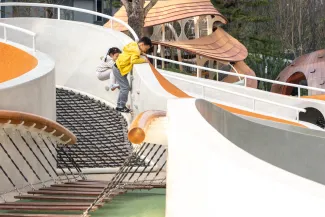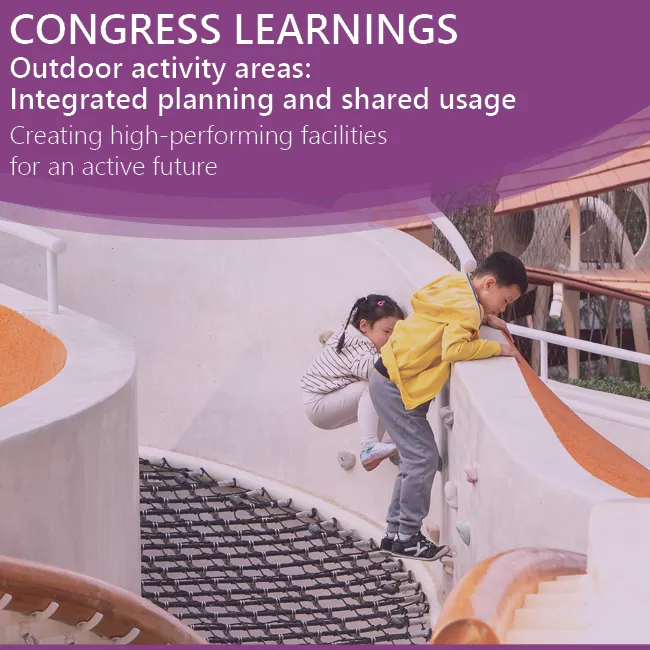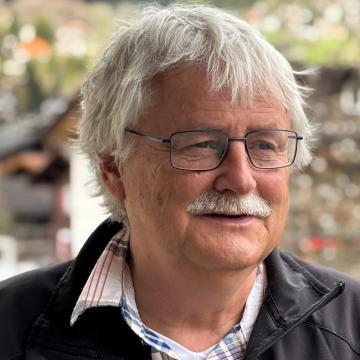
Outdoor activity areas: Integrated planning and shared usage
Moderator: María de Lourdes Sandoval Martinón, Universidad Autónoma Metropolitana in Mexico City, Mexico
This session highlights innovative approaches to designing public and educational spaces that promote movement, inclusion, and social interaction. The Bürstadt Sports and Learning Campus showcases how a multifunctional, sustainable campus can address demographic change, integration, and evolving societal values, creating a hub for sports, education, and community across generations. Complementing this, the focus on schoolyards as active spaces emphasizes the importance of accessible, inviting environments beyond school hours. Open, multifunctional designs without fences, combined with friendly signage, can encourage children and adolescents to engage in joyful, diverse activities, counteracting declining physical activity while fostering vibrant, inclusive meeting places.

On the panel:
Bürstadt Sports and Learning Campus: An integrated approach
Katrin Keil, Manager, Drees & Sommer, Germany
The Education and Sports Campus Bürstadt is an excellent example of how public spaces can be designed to create a place not only for sports and physical activity, but also for education and social interaction across all generations. A modern and multifunctional campus is being developed that meets the requirements of demographic change, changing values in our society, integration and sustainability.
Schoolyards as active spaces beyond school hours
Daniel Wegmüller, Owner, Planungsbüro Wegmüller AG, Switzerland
Research shows that children and adolescents are becoming less physically active. To address this, opportunities for movement are increasingly important both during the school day and beyond. Schoolyards should therefore be designed as inviting spaces that serve not only for lessons and breaks but also as vibrant meeting points after school. They should be open and accessible, without restrictive fences or gates, and offer multifunctional areas that spark joy and encourage diverse forms of play and activity. Clear, friendly, and welcoming signage should support this purpose, avoiding negative or prohibitive language while promoting an inclusive atmosphere.

